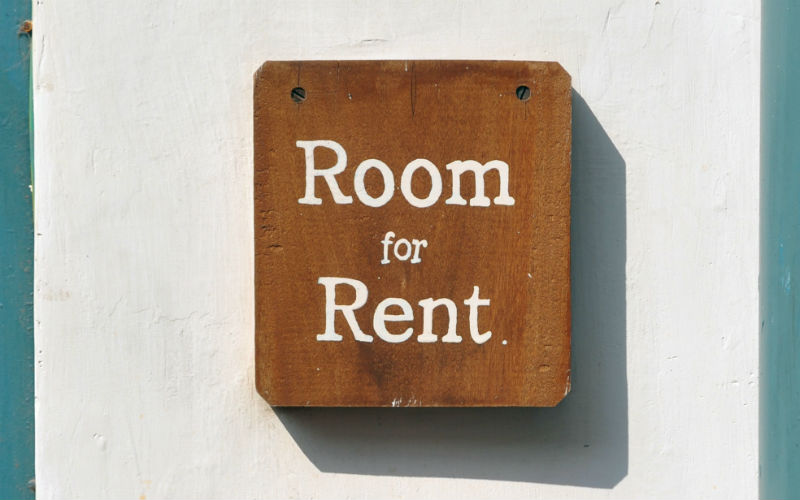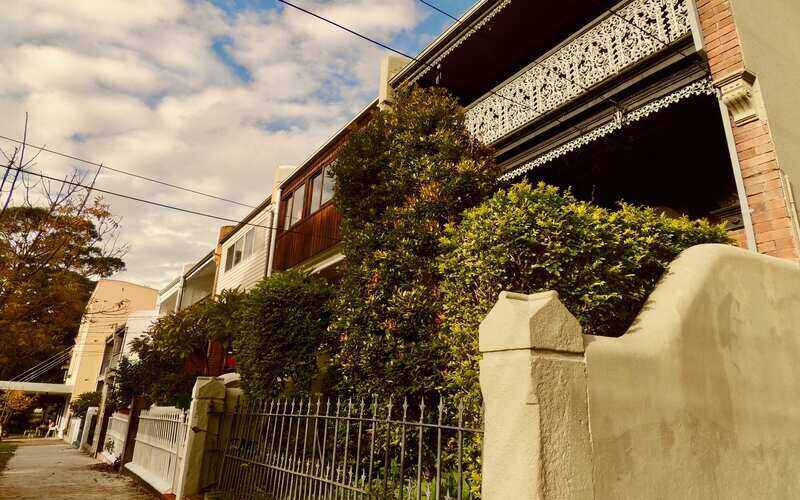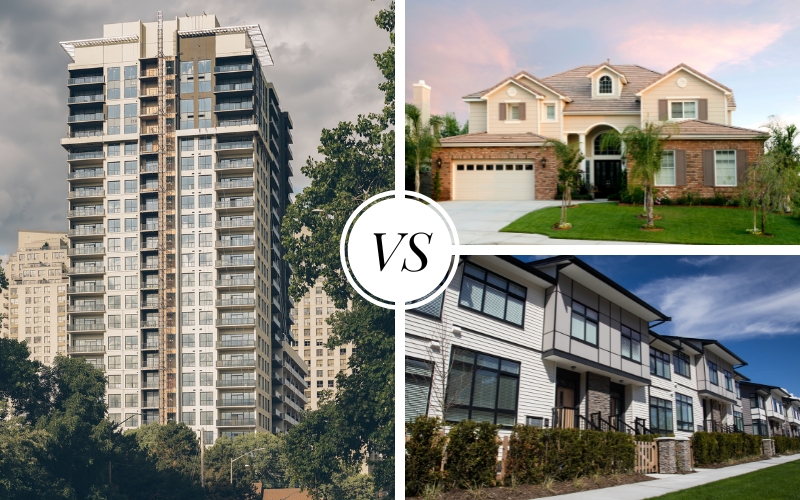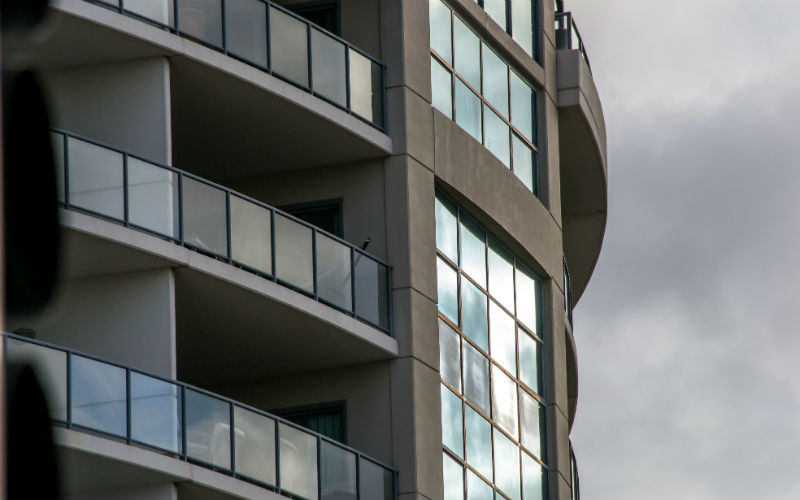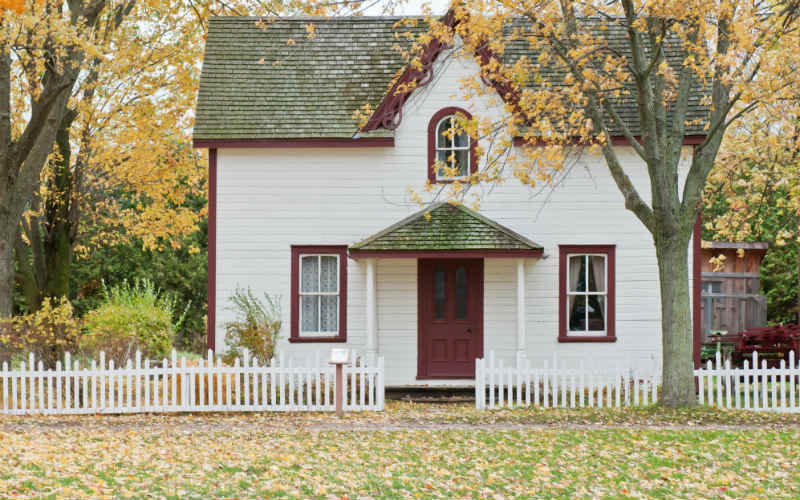There are many costs associated with property investment, including upfront loan costs, upfront buying costs and the ongoing costs of owning the property.
Property investment is enormous in Australia, with Australian Taxation Office (ATO) statistics showing there are more than 2.15 million property investors throughout the country. Most property investors aren’t faceless rich goons looking to hoover up their 26th house either. The ATO’s stats show nine out of 10 of those 2.15 million people own just one or two rental properties at most, with less than 1% of investors fitting into the ‘fatcat’ category of having six or more. Nearly 76% of property investors had an annual taxable income of less than $100,000 too (before tax deductions).
But while it can represent a good way to grow wealth, property investment can be a risky and expensive process. There are many costs associated with property investment, including upfront loan costs, upfront costs when buying the property and the ongoing costs of owning the property.
We’ll explain some of these costs plus a range of property investment tax advantages below.
Home loan costs
Unless you have enough cash to purchase an investment property outright, you’ll probably need a good value home loan to pay for it. Most home loans come with fees and all of them will charge interest (a loan ain’t charity).
Some of the more common home loan fees when investing in property are:
- Lenders mortgage insurance
- Loan establishment fees
- Ongoing fees
- Break costs
- Interest payments
We’ll briefly explain these below. For more detail, read our complete breakdown of home loan fees.
Lenders mortgage insurance
Lenders mortgage insurance (LMI) is an insurance policy covering lenders against losses in the event that the borrower can no longer meet their loan repayments, aka defaulting. You can generally avoid paying LMI if you have a deposit of 20% of the property’s value or greater, or if you use a guarantor (there are other circumstances as well), but if you do have to pay it, it can cost thousands of dollars.
The table below is a rough guide to how much LMI can cost based on different deposit sizes and property values.
LMI premiums for first home buyers
|
Estimated property value |
95% LVR LMI cost |
90% LVR LMI cost |
85% LVR LMI cost |
|
$200,000 |
$4,727 |
$3,498 |
$1,550 |
|
$400,000 |
$11,897 |
$8,575 |
$3,777 |
|
$600,000 |
$23,954 |
$13,284 |
$6,463 |
|
$800,000 |
$31,939 |
$17,712 |
$8,617 |
Source: Savings.com.au's Lenders Mortgage Insurance Calculator. Prices including GST but excluding stamp duty. Based on a loan term up to 30 years.
Loan establishment fees
Also known as an application fee, an establishment fee is basically a one-off payment at the beginning of the loan to pay for the processing documentation. Not all lenders charge this, but those that do will often charge around $250, depending on who you go with, while the maximum can be as high as $800-$1,000. You can also be charged a valuation fee, but this is sometimes bundled into the establishment fee.
State Governments also typically charge mortgage registration fees to register that property as a security on the home loan. These are different from loan establishment or application fees and can be seen in the table below (accurate at the time of writing):
|
State |
Fee |
|
ACT |
$145 |
|
NSW |
$141.69 |
|
NT |
$145 |
|
QLD |
$187 |
|
SA |
$163 |
|
TAS |
$135.09 to register, $167.48 to discharge |
|
VIC |
$116.80 |
|
WA |
$171.20 |
Source: Each State Government’s website.
Ongoing loan fees
As well as an application fee, your home loan may also come with an ongoing fee, usually charged annually. Again, not all lenders charge this fee, but common costs can be around $100 to $180 per year, while some can charge upwards of $400.
This pales in comparison to the savings you can make with a low interest rate however.
Interest payments
Although not a fee, interest will generally be the biggest cost of a home loan. A low interest rate on your investment home loan can save you tens of thousands of dollars from the overall cost of buying that property, as the example below shows (using our home loan repayment calculator):
|
Loan amount |
2.50% |
3.50% |
Monthly savings at 2.50% |
Total savings at 3.50% |
|
$300,000 |
$1,185.36 |
$1,347.13 |
$161.77 |
$58,238.52 |
|
$400,000 |
$1,580.48 |
$1,796.18 |
$215.7 |
$77,649.22 |
|
$500,000 |
$1,975.60 |
$2,245.22 |
$269.62 |
$97,062.85 |
|
$700,000 |
$2,765.85 |
$3,143.31 |
$377.46 |
$135,889.13 |
Investment home loans usually carry higher interest rates on average than an owner-occupier loan, which means a higher interest cost. Check out our investment home loan comparison table for a look at some low-rate loans.
Home loan break costs
Break costs only apply to fixed home loans, and they occur when you leave the loan before the fixed-rate term is up. These fees can often cost a couple of thousand dollars, with some experts quoting instances of $30,000+ fees, so think long and hard about whether a fixed-rate loan is a good option or not.
Early exit fees may be charged by your lender if you fully pay off your mortgage earlier than the originally stated loan term, and discharge fees may apply once the loan is completed in order to cover the corresponding paperwork.
All or none of these may apply for any given home loan - just make sure you check the terms and conditions to see what fees they’re charging.
Property buying costs
While the above fees apply to a home loan, there are costs you have to account for over the actual home-buying process:
- The deposit
- Stamp duty
- Solicitor and conveyancing fees
We’ll start with the biggest cost: the deposit.
The deposit
The deposit on a home isn’t actually a ‘fee’ so to speak: it’s the portion of the property’s value (ideally 20%) you pay directly to the seller of the house, either by cheque, deposit bond or via an electronic transfer.
A property deposit is an enormous block of cash to handover. A 20% deposit on a $500,000 home, for example, is $100,000: hardly pocket change. A higher deposit will convince a lender you’re a more trustworthy borrower, and will likely allow you to get a more favourable investment home loan.
Read our articles on how to pay a house deposit and how to save for a house deposit for more info. If you already own a property and want to buy a second as an investment, you can also use any equity you have as a deposit as well, which can be much easier.
Stamp duty on investment property
Stamp duty is a state government tax and covers the cost of changing title and ownership details. It varies depending on the state the property is located, the price of the property and, whether the home is for investment or residential purposes. Investment homes tend to have higher stamp duty costs than ones you plan to live in.
You can work out the cost of stamp duty using an online calculator, such as the Savings.com.au Stamp Duty Calculator. But to give you an example of how much it can cost, stamp duty for an established home valued at $500,000 in New South Wales can be over $17,000.
Since stamp duty often needs to be paid as a lump sum upfront, it can be a major barrier to homeownership for many, which is why you need to factor it in when buying.
See also: State and territory stamp duty exemptions breakdown.
Solicitor and conveyancing fees
Legal fees such as a solicitor or conveyancing fee are fees paid to cover the legal transfer of the property. Depending on your lender, legal fees can range from $100 upwards, and can be as high as $1,000 in some cases. Professional conveyancers can cost between $500 to $2,500 in some cases.
These fees can often be referred to as a title transfer fee, and there might also be a ‘search processing fee’ of around $50 per search from the lender.
Property owning costs
As well as property buying fees and home loan fees, there are ongoing fees associated with holding that investment property. Not all of these may apply, and some are optional, but the most common and important investment fees are as follows:
- Home and landlord insurance
- Land tax
- Council rates
- Body corporate fees
- Property manager fees
- Repair and maintenance fees
- Depreciation
- Advertising fees (for tenants)
Insurance (home and landlord)
Landlord insurance is a type of insurance policy specifically designed to protect those who own investment properties from the risks that come with renting it out. It works in conjunction with home and contents insurance but has extra coverage to protect against loss or damage arising from tenancy issues, such as a loss of rental income, theft or damage to your property.
This isn’t always a necessary fee to pay - you can go without insurance, but it’s generally advised that you have it and many lenders might require that you do in order to approve you for an investment home loan. It’s common for average annual policy prices to hover between $1,000 to $2,000 in the different states, with North Queensland seeing premiums upwards of $3,000.
Read our article on landlord insurance for more information on how it works.
Council rates
Unless you don’t want your bins collected, you’d better pay council rates. Also referred to as government rates, this is an annual or quarterly fee collected by local governments in order to properly maintain the council area, providing bins collection services, plumbing and electricity and so on.
These costs are usually indexed against the property’s value but it can vary from state to state. Generally speaking, this could cost some thousands of dollars per year, even if you’re not living in the property, so you need to factor this into your investment budget.
Contact your local or state government for more information.
Land tax
Another cost you have to pay to own a property is land tax: an annual cost levied on the owners of the land (not the property itself). This is levied by state governments, excluding the Northern Territory, so the cost can vary a lot depending on the worth of the land if it was empty.
Body corporate fees
Often charged quarterly, body corporate fees (sometimes called strata fees) are rates charged on apartments, units and townhouses. This fee exists to cover the maintenance of the shared areas of the property, such as balconies, lifts and gardens as well as the management of the block (someone’s gotta do it). You should be aware of the exact cost of the body corporate before buying into a particular investment property.
Body corporate rates vary a lot depending on the location, size and condition of the property, but can cost anywhere between $50 and $600 per week. Fees of $1,500 to upwards of $25,000 per annum are common.
Property manager fees
If you decide you don’t want to do the day-to-day running of the property yourself - and who could blame you since there’s really quite a lot to do - you can outsource this to a property manager. A good property manager will organise mostly everything from the collection of rent, to organising and overseeing repairs and maintenance.
Depending on your state and which manager you choose, a property manager could cost around 5-12% of your weekly rental income. According to Which Real Estate Agent, here’s a breakdown of the approximate average property manager charges across the country for management fees:
|
State |
Average cost (% of rental income) |
|
NSW |
5-8% |
|
QLD |
9% |
|
VIC |
6% |
|
SA |
9-11% |
|
WA |
8-11% |
|
ACT |
6-8% |
|
TAS |
7.5% |
Property management app :Different claims to charge much less than this at a $100 monthly flat rate.
Repairs and maintenance
Anything that can go wrong will go wrong. As a landlord, you have a responsibility to ensure the property is in a livable condition for the tenants. This means in the event that something breaks (like a toilet or the oven) or something more serious happens (like the roof collapsing in a storm), you’ll have to pay to get this fixed unless it’s covered by insurance (you still have to make sure it gets repaired though, as per our guide on tenants' rights).
Obviously, there’s no set cost for repairs and maintenance - you could, in theory, spend $0 per year. But it’s generally advisable to keep a yearly budget set aside in the event you ever need to fix the place up.
Depreciation
Naturally, many elements of your rental property (like the carpets, curtains, air-conditioners, appliances and furniture) will fall in value over time. You should factor this into your budget as you likely would have paid for these when buying the property. Out-of-date features and amenities can lower the value of the property too.
As we’ll explain below, you could claim some of the depreciation of the items in your investment property on tax. According to Chartered Accountants, depreciation alone is worth an average of $9,250 in claims each year.
Advertising for tenants
One of the final costs you need to factor in is the cost of actually finding a tenant to live in it. Unless you don’t want to receive a rental income, you’ll need to find a tenant, and to do this you’ll have to advertise. This is usually done on the usual real estate sites like Domain and realestate.com.au, and can generally cost at least a few hundred dollars.
The longer it takes to find a tenant the longer the ads stay up, and the longer they stay up the longer you’ll have to pay. A good property manager should handle this for you.
Tax and property investment: the basics
While this list of costs might seem endless and exhaustive - and congratulations if you’ve made it this far - don’t let it turn you off property investment. Because as it turns out, a lot of these costs are actually tax-deductible in some way, and there are other tax benefits to property investment as well, such as negative gearing concessions.
With all things tax, you should consider checking with the ATO for the official explanation of how these things work, or consult a registered tax professional.
- What is tax deductible on an investment property?
- Negative gearing and capital gains tax discounts
- Don’t forget your rental income is taxable
What is tax deductible on an investment property?
According to the ATO, ‘investment expenses’ can be claimed as tax deductions on the condition that they’re used on parts of the property being rented out. You can’t claim deductions on things the tenants pay for, but if you rent the house out you could claim each of the following things on tax each year:
- The interest costs of the loan
- Loan establishment fees
- Lender’s mortgage insurance
- Title search fees
- Mortgage broker fees
- Stamp duty charged on the mortgage
- Advertising to find new tenants
- Bank fees and loan charges
- Body corporate fees, cleaning costs and council rates
- Electricity and gas not paid by the tenant
- Home, contents and landlord insurance
- Legal expenses and land tax
- Property manager fees and commissions
- Repairs and maintenance
- Costs incurred for the inspection or maintenance
- Depreciation on newly purchased items
As you can see this is a pretty big list, and some of these things like loan fees, advertising, stamp duty and land tax are costs we’ve mentioned already in this article. Travel expenses to and from the property used to be tax deductible, but this is no longer the case, and according to an ATO spokesperson, more than 70,000 people incorrectly claimed travel expenses on their investment properties last year.
"Remember, since 1 July 2017 you can only claim deductions for travel costs relating to a residential rental property if you are carrying on a business of letting rental properties," a spokesperson told Savings.com.au.
"Generally, owning one or several rental properties will not be considered being in the business of letting rental properties."
Most notably, you’ll see that the interest on the loan is tax-deductible. This is a huge amount of money you can deduct, as the average home loan can charge hundreds of thousands of dollars interest over the loan term. It also means interest-only loans are very popular with investors, as they can temporarily claim 100% of the loan cost on tax before it reverts to principal and interest.
It’s worth speaking to a qualified accountant to get advice on these things, and you should always endeavor to keep receipts and records when possible. The ATO also requires evidence of the nature of goods purchased, so a simple receipt might not always be enough. You can’t claim any rental property expenses on your tax return if you can’t prove the claim.
Related: What investors need to know for the 20/21 tax season.
Negative gearing and capital gains tax discounts
There are two more potential tax breaks that can apply to investment property owners in Australia: negative gearing concessions and capital gains tax (CGT) discounts.
Many property investors utilise the ATO’s negative gearing concessions as a tax minimisation strategy. Essentially, you are negative gearing if you borrow to invest in something and the annual expenses for that investment are greater than the annual income that investment generates, i.e. you are making a loss on that investment.
The ATO allows you to carry forward an annual loss made on a property in any given year. Say if you receive $2,000 a month from rental income, but the property costs you $2,500 a month after home loan repayments, bills and property expenses are factored in, then you are making a loss on that property, and can carry that loss forward against your taxable income. You’re not saving money by doing this - you’re technically still losing money on the property but are reducing your taxable income in the hopes of making a profit later on.
This is where the capital gains discount comes in.
The capital gains tax is the tax incurred on the profit from selling an investment (such as a home), with the capital gain being added to your assessable income just as your rental income is. This can massively increase your taxable income, but the current rules state if you’ve held the investment for more than a year, you can get a capital gains discount of 50%. So if you made a $100,000 profit on a house, you’d only have to pay tax on $50,000.
Don’t forget your rental income is taxable
As it is classified as income, your rental income is taxable. It gets taxed at your normal marginal tax rate (seen below for 2020-2021) and needs to be declared on your tax return:
|
Taxable income |
Tax on this income |
|
0 – $18,200 |
Nil |
|
$18,201 – $45,000 |
19 cents for each $1 over $18,200 |
|
$45,001 – $120,000 |
$5,092 plus 32.5 cents for each $1 over $45,000 |
|
$120,001 – $180,000 |
$29,467 plus 37 cents for each $1 over $120,000 |
|
$180,001 and over |
$51,667 plus 45 cents for each $1 over $180,000 |
Source: ATO
A person with an income of $95,000 per year who receives $30,000 per year in rental income would now have a taxable income of $125,000, which is enough to push them over the next tax threshold.
But as listed above, many costs are tax-deductible, which should help ease your tax burden a bit.
Savings.com.au’s two cents
Wow, that’s a lot of stuff, so if you’ve made it this far, congrats! The key takeaway is there’s a lot of expenses that come with investment properties, be they essential costs or optional ones. Investing in property is expensive, it's true, and that can put a lot of people off, but don’t take this article to mean you shouldn't do it.
There are a lot of benefits to investing in property:
- They can be very tax-effective
- Because of the leverage you get through the loan, you can make a huge capital gain when you sell (and this is really where most of your profits will come from)
- You can own a home that you might one day decide to move into
The key is to be sensible: don’t rush into buying the first house you lay your eyes on, because it might be one you can’t afford. Take the time to do your research - consulting an expert like a buyer’s agent if necessary - and make sure you’d work out your investment budget accordingly.
And make sure you have a good value home loan that suits your needs.
Photo by Kelly Sikkema on Unsplash

Ready, Set, Buy!
Learn everything you need to know about buying property – from choosing the right property and home loan, to the purchasing process, tips to save money and more!
With bonus Q&A sheet and Crossword!
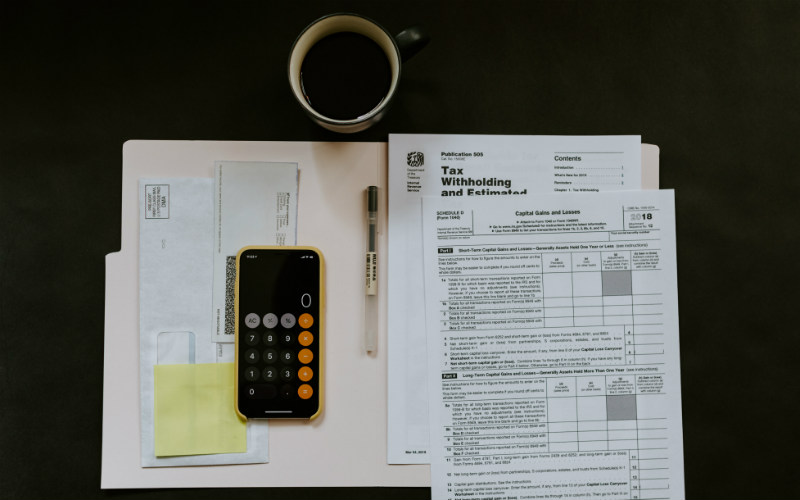


 William Jolly
William Jolly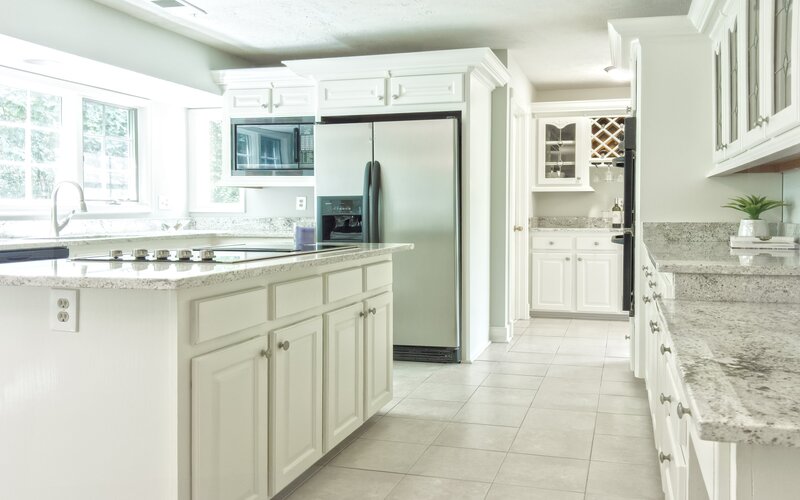
 Aaron Bell
Aaron Bell
